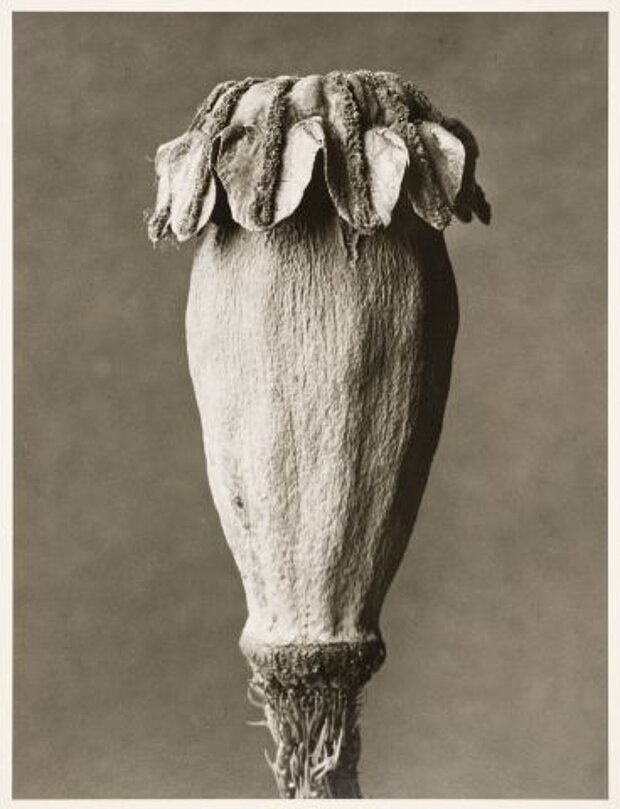
Blossfeldt, Karl
Papaver orientale. Orientalischer Mohn. Samenknospe, 5-fach vergrößert
Papaver orientale. Oriental poppy. Seed bud, magnified 5 times
1900 - 1928

© mumok
| Object description | b/w photograph |
|---|---|
| Object category | photographie |
| Material |
object:
photographic paper
support:
cardboard
|
| Technique |
object:
black-and-white-photograph
|
| Dimensions |
support carton:
height: 42,9 cm,
width: 32,5 cm
object:
height: 26 cm,
width: 19,6 cm
|
| Year of acquisition | 1977 |
| Inventory number | G 477/6 |
| Creditline | mumok - Museum moderner Kunst Stiftung Ludwig Wien |
| Rights reference | Gemeinfrei | public domain |
| Further information about the person | Blossfeldt, Karl [GND] |
This is a series of black-and-white photographs that all show the same thing in the same format: ornaments. Spirals, circles, and scales all hang next to each other, and somehow we guess that the series is not yet over. If you look closely you will notice that all of these objects are enlarged parts of plants, and they are denoted with their botanic names in Latin. Before a monochrome background and always using the same neutral source of light, these fragments of flora look somewhat unnatural. The fact that they are enlarged up to 45 times their real size also creates a defamiliarizing effect. Karl Blossfeldt first used his photographs as materials for teaching—beginning around 1898. These plant forms were shown to school students visiting the museum of applied arts in Berlin. For Blossfeldt these photographs showed primeval natural forms. He thought that every ornament in art had a natural source, which should be studied and drawn, after which the students were asked to develop their own forms. The technique of photography was perfect for this, as a large number of materials could be kept in this form in a small space and without any need for conservation. For more than thirty years, Blossfeldt took photographs for this purpose—nearly 6000 in all. The gallery owner Karl Nierendorf saw the aesthetic qualities of these photographs and showed an exhibition of some of them in 1926. In 1928 Blossfeldt published 120 photographs in the book “Primeval Forms of Art”. In his review of this book, art theorist Walter Benjamin wrote: “Whether we accelerate the growth of a plant in quick motion, or show it magnified forty times—in both cases a geyser of new pictorial worlds spurts up at those points of being where we expected them least.”
© mumok – museum moderner kunst stiftung ludwig wien